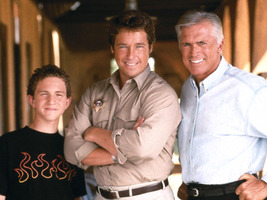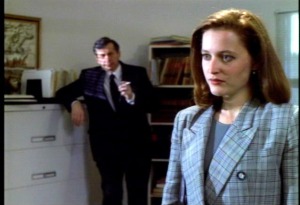 I have a confession.
I have a confession.
I’ve never watched Dr. Who. I have a passing familiarity with who The Doctor is and what a TARDIS is, mainly via geek osmosis (geekmosis?), having a lot of friends and Tweeps who are fans. I’ve caught bits and pieces of a few episodes since it began airing on BBC America, but the whole thing seemed too overwhelming to try and jump in mid-stream. I mean, the show is in the Guiness Book of World Records as the longest running science fiction show and its lead has been played by eleven different actors. Where do you start?
You start, I’ve discovered, with The Eleventh Hour.
This is the first episode of season 5 (of the show’s modern incarnation) and the introduction to Matt Smith as The Doctor. It functions very much as a pilot, and I highly recommend it to any Doctor Who virgin. It is a continuation from the end of season 4 and includes many significant updates and references for loyal viewers, but you don’t have to know that to enjoy it.
It’s action-packed from the first moment. The Doctor–in this case a gangly 20-something in a shirt and necktie–clings precariously to his police call box, hurtling across the London night sky, narrowly missing Big Ben. He crash lands in the backyard (the garden, as they say in the U.K.) of a young red-headed Scottish girl, just as she is praying to Santa Claus for someone to fix the crack in her bedroom wall. He climbs from the box, soaking wet and demanding an apple. Though these two characters have never met, neither is the slightest bit shy about speaking his or her mind.
“I’m the Doctor,” he announces. “Do everything I tell you, don’t ask stupid questions, and don’t wander off.” Though the girl, Amelia Pond, (Caitlin Blackwood) isn’t a particularly docile kid, she’s game to go along with whatever he says. They banter like a brother and sister as they bounce around the kitchen trying to find something he likes to eat. From this we learn that the Doctor is not himself. He has just acquired a new body, which he is still getting used to, and he’s not even sure of his own tastes. This is part is not explained but, according to Wikipedia, The Doctor regenerates a new body when mortally wounded; a convention that protects the show against jumping the shark even after 5 decades.
The Doctor and Amelia inspect the crack with the help of a gadget that’s something like a Swiss Army laser pointer (an iconic Doctor prop known as the Sonic Screwdriver). The crack is a crack in the fabric of the world and, though it, an alien being is searching for an escapee called Prisoner Zero. Before The Doctor can catch Prisoner Zero, though, he has to secure a glitch with his police box, explaining to Amelia as he climbs aboard that it’s a time machine. He makes a heartfelt promise that he will return in five minutes. She packs a suitcase and plops down on top of it to await his return.
These first 15 minutes is an absolute delight. It has fun, fairy tale-like air with a hint of foreboding; that crack is scary, especially when considered through the eyes of a child. And her complete acceptance of The Doctor as her friend and protector is completely endearing.
The Doctor returns in daylight and runs to the house. We’re led to believe a few hours have passed. Then, wait, it’s six months. There are clues that it’s longer–the house looks a bit worse for wear and the foliage has grown up in the yard. But he said five minutes. Inside the house, a police woman whacks The Doctor with a cricket bat and handcuffs him to a radiator. Her outfit is a little to sexy to be believable as a standard issue police uniform, and she eventually admits that it’s a “kiss-o-gram” costume.
Here we find the twist that–if you somehow have not seen the show since Matt Smith took on the role of The Doctor–just might take you by surprise. Ready?
This cheeky young woman (Karen Gillan) is Amelia, and twelve years have passed.
“I grew up.”
“You never want to do that.”
Caitlin Blackwood and Karen Gillan are real-life cousins, which brings a true family resemblance, and both girls just light up the screen with their charisma. The monster-of-the-week arc provides a wealth of background about the characters and the world of the show. The escaped alien is still living in her house. Its jailer has resumed an active and aggressive search for it, spurred by The Doctor’s return.
It is revealed that Amelia, now going by Amy, held out hope for the return of the man she called “The Raggedy Doctor” for years. She told friends and neighbors about him, drew pictures of their adventures, and even role played their relationship. It’s enough to break your heart, but the action doesn’t stop long enough.
The aliens are about to incinerate the Earth if Prisoner Zero is not handed over, so The Doctor and Amy, with help from her boyfriend and a couple of neighbors, must scramble to save it.
The Eleventh Hour has everything a pilot needs: a great episode arc, along with a hook into a season arc; characters we want to get to know better; enough back story to pique curiosity without slowing the pace; and endless possibilities for where the story can go–quite literally in this case.
Did I mention I recommend it? It’s available on Amazon if you need to catch up.










